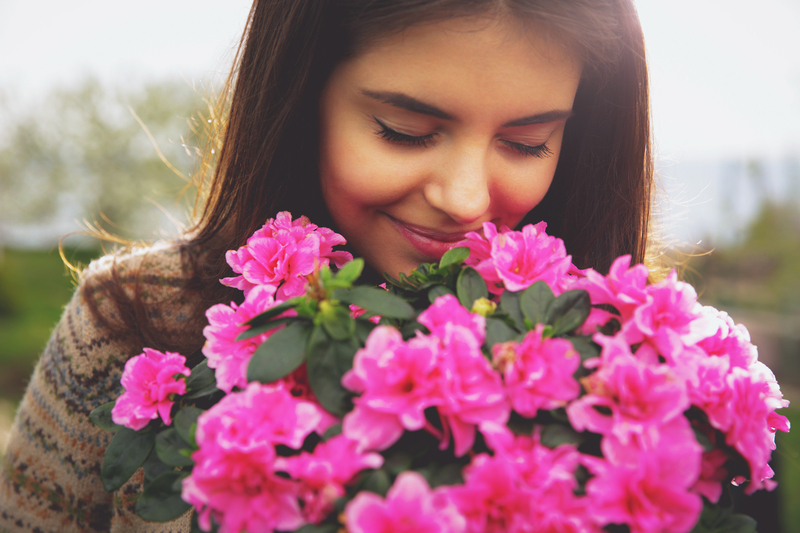Expert advice on ensuring the longevity of cut flowers
Posted on 02/09/2025
Expert Advice on Ensuring the Longevity of Cut Flowers
Cut flowers bring beauty, fragrance, and joy into our lives, whether they're a gift, part of home decor, or a personal indulgence. However, their ephemeral nature often makes you wonder how to keep them looking vibrant for as long as possible. With professional guidance and a few strategic tricks, you can dramatically extend the lifespan of your bouquet. In this comprehensive guide, we'll reveal expert advice for keeping cut flowers fresh and maximizing their vase life.

Understanding the Science Behind Cut Flower Longevity
Before diving into actionable tips, it's important to understand why cut flowers wilt or fade. Once a flower is cut, it's separated from the plant's root system, losing its primary source of water and nutrients. Without proper care, bacteria, air, and lack of nourishment accelerate wilting. Therefore, the key to extending the life of cut flowers is to optimize water absorption and minimize bacterial growth.
Top Tips from Florists: How to Make Cut Flowers Last Longer
1. Choose the Freshest Flowers
- Buy from Reputable Sources: Select experienced florists or local markets with high flower turnover.
- Inspect Petals, Leaves, and Stems: Look for vibrant color and crispness without bruises or brown spots.
- Check the Buds: Partially closed buds last longer than fully open flowers because they continue to blossom after being cut.
Tip: Ask your florist about the arrival date of their shipments for the freshest selection.
2. Properly Prepare Your Vase
- Clean Thoroughly: Wash your vase with hot soapy water to eliminate bacteria that cause decay.
- Rinse Well: Ensure no soap residue remains, as this can harm your cut flowers.
A pristine vase is crucial for preventing the growth of microorganisms that shorten flower longevity.
3. Cut Stems Correctly for Optimal Water Uptake
- Use Sharp, Clean Scissors or Pruners: This prevents crushing stems, which hinders water intake.
- Cut at a 45-Degree Angle: An angled cut increases the surface area for water absorption and keeps stems from sitting flat against the vase bottom.
- Trim Under Water: For extra protection, cut stems while submerged to prevent air bubbles (embolisms) from blocking water pathways.
Expert recommendation: Trim 1-2 inches from the bottom of each stem right before placing them in water.
4. Remove Lower Leaves
- Avoid Submerged Foliage: Remove any leaves that will sit below the waterline to prevent bacteria growth.
- Promote Clean Water: Foliage in water decomposes fast and fosters mold and bacteria, shortening flower life.
5. Use Fresh, Cold Water with the Right Additives
- Change Water Daily or Every Other Day: Fresh water discourages bacterial growth and replenishes nutrients.
- Cool Water Works Best: Room temperature or slightly cool water is ideal for most flowers.
- Flower Food: Use commercial packets from florists, or DIY a preservative (instructions below).
Commercial flower food usually contains:
- Sugar - feeds the flowers
- Citric acid - lowers pH for better water uptake
- Bleach or biocide - inhibits bacterial/fungal growth
6. DIY Flower Food Recipe
If you don't have a store-bought preservative, make your own:
- 1 quart warm water
- 2 tablespoons lime or lemon juice
- 1 tablespoon sugar
- 1/2 teaspoon bleach
Mix well and refresh the vase every 2 days for long-lasting cut flowers.
7. Mind the Placement
- Avoid Direct Sunlight and Heat: Display arrangements away from sunny windows, radiators, and appliances.
- Keep Away from Drafts and Vents: Air currents can dehydrate petals and accelerate wilting.
- Don't Place Near Ripening Fruit: Fruit emits ethylene gas, which speeds up the aging of cut flowers.
Expert tip: Nighttime refrigeration (when possible) can extend the vase life of certain flowers, especially roses and tulips.
8. Daily Flower Care Routine
- Remove Wilting Blooms: Prune away spent flowers to prevent ethylene buildup.
- Re-trim Stems: Cut another half inch every 2-3 days for superior water uptake.
- Top-Up Water: Flowers drink more than you think--keep the vase filled.
Special Tips for Popular Cut Flowers
Different species have specific preferences. Here's how to optimize longevity for some of the most popular types:
- Roses: Remove all lower leaves and thorns. Recut stems under running water every two days.
- Tulips: Like cool, shallow water. Add a penny or a dash of bleach to prevent droopiness.
- Lilies: Remove pollen from stamens to avoid marks on petals and prolong bloom.
- Gerbera Daisies: Water quality is vital--change daily to prevent stem rot.
- Hydrangeas: Submerge heads in water for 1 hour if they wilt; they rehydrate well.
Pro tip: For stem-heavy flowers like sunflowers, support stems with mesh grids or pebbles at the vase bottom.
Common Mistakes That Shorten Vase Life
Avoid these pitfalls to ensure your blooms last:
- Skipping the Water Change: Stagnant water rapidly breeds bacteria.
- Using Dirty Vases: Bacteria residue accelerates decay.
- Neglecting to Trim Stems: Water blockages reduce absorption.
- Placing in Sun/Heat: High temperatures dehydrate petals.
- Ignoring Ethylene Sources: Bananas, apples, and even wilted flowers produce ethylene that ages blooms.
FAQs About Keeping Cut Flowers Fresh
How long do cut flowers usually last?
With proper care, most cut flower arrangements can last from 5 days to 2 weeks. Carnations and chrysanthemums may last longest, while poppies and gardenias are notably short-lived.
Why do my flowers droop so quickly?
Common causes include old or damaged flowers, dirty water or vase, air bubbles in stems, or excessive heat/sun exposure. Following the steps above will minimize droopiness and maximize vase life.
Is it true that adding aspirin, soda, or vodka helps?
Some household remedies (such as aspirin or a small splash of clear soda) can help, mainly by lowering the pH and providing sugar. However, commercial flower preservative or the simple DIY recipe works best because it includes a disinfectant element.
Should I mist flower petals?
For some tropical or delicate flower types, a gentle mist can help, but for most cut flowers, keeping stems submerged is more effective. Avoid soaking petals, as dampness can cause mold.
Creative Flower Arrangement Techniques to Support Freshness
- Stems at Different Heights - Ensures every stem gets water and air circulation.
- Remove Wilting Heads Promptly - Prevents production of ethylene, the "wilt" gas, from aging the bouquet.
- Use a Floral Frog or Foam - Secure arrangements and encourage even water distribution.

Summary: Essential Steps for Longer-Lived Cut Flowers
In summary, maximizing lasting beauty from your flower arrangement is all about clean tools, fresh water, stem preparation, and proper placement.
- Buy fresh, healthy flowers.
- Clean and disinfect vases.
- Trim stems at an angle and under water if possible.
- Remove all foliage below the water line.
- Use flower food or a homemade preservative.
- Change water and recut stems every 2 days.
- Display in a cool, shaded area away from ripening fruit.
- Remove wilted blooms promptly.
Conclusion: Enjoy Your Cut Flowers Longer
With diligent care and the right techniques, you can celebrate the simple pleasure of long-lasting blooms. These florist-backed tips for extending vase life guarantee that every bouquet--whether a luxury arrangement or a homemade bunch--remains a source of beauty and happiness for days on end.
Follow this expert advice, and turn your fleeting flowers into a lasting joy!
```Latest Posts
Extend the Life and Beauty of Your Poinsettias
Expert advice on ensuring the longevity of cut flowers
3 Handy Tips to Keep Your Flowers Looking Fresh
The Rich Tapestry of Peony Flower Colors and Their Symbolism
What Hidden Details About You Are Revealed by Your Birth Flower?






